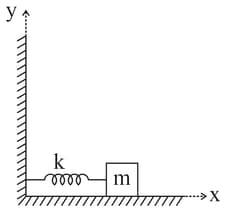Embibe Experts Solutions for Chapter: Simple Harmonic Motion, Exercise 1: Assam CEE 2017
Embibe Experts Physics Solutions for Exercise - Embibe Experts Solutions for Chapter: Simple Harmonic Motion, Exercise 1: Assam CEE 2017
Attempt the practice questions on Chapter 18: Simple Harmonic Motion, Exercise 1: Assam CEE 2017 with hints and solutions to strengthen your understanding. EMBIBE CHAPTER WISE PREVIOUS YEAR PAPERS FOR PHYSICS solutions are prepared by Experienced Embibe Experts.
Questions from Embibe Experts Solutions for Chapter: Simple Harmonic Motion, Exercise 1: Assam CEE 2017 with Hints & Solutions
The time period of a simple pendulum inside a stationary lift is . If the lift starts moving upwards with an acceleration of , its time period will be,
A mass is suspended from two coupled springs connected in series. The force constants for springs are and . The time period of the suspended mass is
An object of mass is attached to a spring which is fixed at one end on a rigid support and the mass-spring system is kept on a frictionless table. The object is allowed to execute simple harmonic motion along - direction. The force constant of the spring is and the spring is stretched initially a distance of , the total energy stored in the system is

A particle moves in the -plane under the action of superposition of two simple harmonic vibrations. The resultant displacement of the particle is governed by the equation.
where and are positive constants. The particle trajectory is linear with a negative slope for
A simple pendulum suspended from the ceiling of a stationary lift has a time period . When the lift descends at uniform speed, the time period is . When the lift descends with constant acceleration, the time period is . Which of the following is correct?
